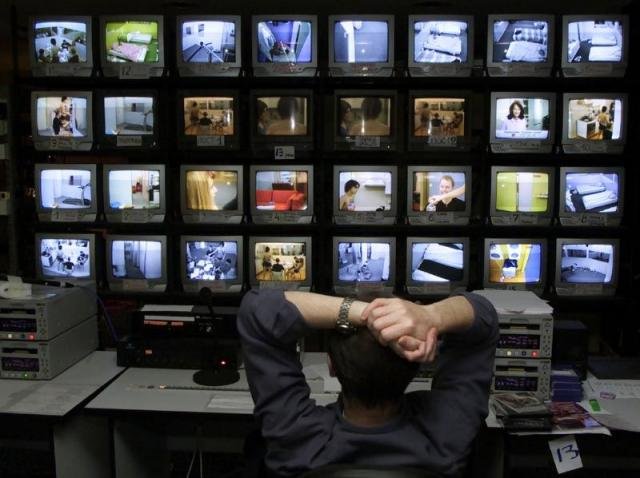Product Idea: Advanced Surveillance for Your Business means Advances Security
Surveillance systems haven't changed much since the CCTV. Maybe its time...
Situation
Businesses have to care for their own safety. Their option is to get as many cameras as they can. These then have to monitor every corner of the companies property. All the resulting pictures are put onto seperate screens, positioned in front of a guard.
Due to limited budged, there are only a few cameras. These are focused on choke points and points of interest in the building. This also limits the amount of guards needed in front of the monitors.
Problem

Who manages to have an overview over all those screens for his whole shift?
More Cameras means less overview, more people to monitor and more storage of the footage.

Basically this: A maximum is reached and until then the oversight goes down until you can't see the forest for the trees.
To add to this, the company Innovative Security put together this 3 myths propagated by cinema:
- Surveillance Video is Stored Indefinitely
Most camera systems are designed to store about 30 days of footage before it starts overwriting itself, because of expensive disk space.
- Someone is monitoring the Cameras at all times
This is also misleading. Besides high-security applications, there usually isn’t someone designated to this job simply because of its expense. If a crime is committed, management can easily go and search for the footage from their recorder.
- Facial Recognition Software can pick someone’s face out of a crowd
It is used in some applications as a form of access control, but the person attempting to gain access would have to stand still and look directly into a camera for the system to recognize the user’s face.
All false and major problems of todays surveillance systems.
Solution
Combining all cameras to form a 3D virtual reality environment.
There exists already many programs (here, here, here, here and here), that can throw together multiple pictures of an object, recognize the angles they have been taken and combine them to form a 3D model.

Three pictures combined to one 3D model.
Doing all this with video streams is only a matter of computing power. The same system is already in use for 3D videos, even thought that they are not yet streamed.
This would effectively mean: more cameras = more solution and better overview

The amount is limited by budget, and computing power...so only budget
This cameras all together would then form a 3D virtual environemt of the factory:
The computer could then also recognize movement and compare it to the tracking of employee badges. The model of the whole factory could be displayed on a big 3D monitor, with highlighting of recognized persons.
In case of an incident, the footage can be viewed from multiple angles and without jumping from camera to camera.
Conclusion
This solution would need mainly a software approach, since most of the technology is already available. The usage of hardware/calculating power for this process might be high, so it should be main focus to slim down the algorythm and speeding up the program.
With the software making good progress, it would open up the development for constructing a virtual reality and 3D monitor interface to ensure an easy use.
Side note: Government has too much surveillance already, but for businesses this might be a good compromise to have an efficient surveillance. In casinos there are hundreds of cameras, but only so many operators.
The storage would still be expensive thought.
Thank you for reading!
If you like the idea and want to solve this problem, feel free to do so! You can start by following through my engineering series on construction and development here, by taking the first step on the way to your product.

